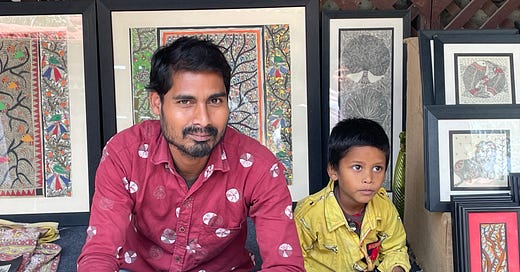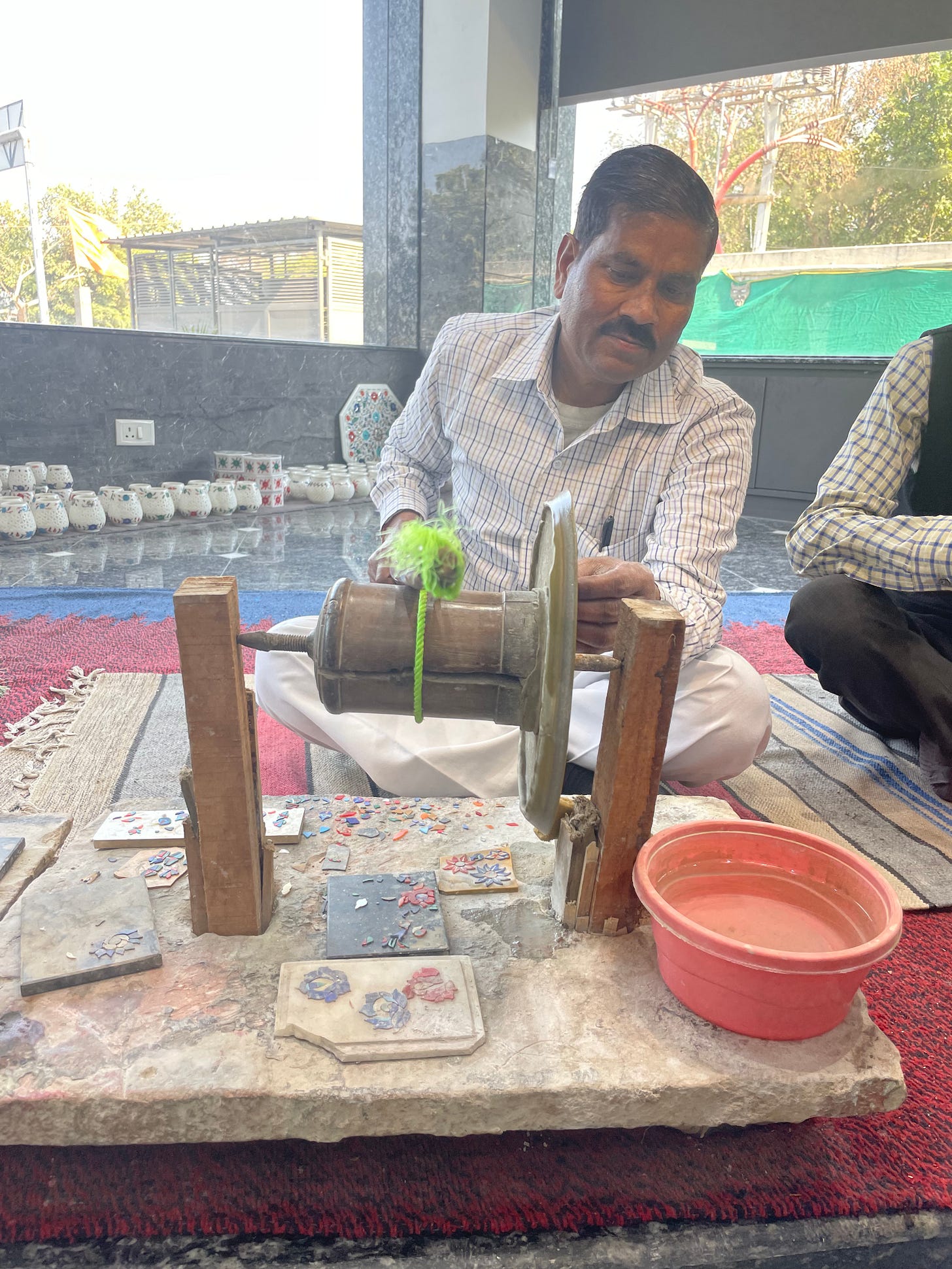The Fragility of India’s Artisan Communities
India’s communities of specialized artisans—who are often the knowledge-keepers of their centuries-old craft traditions—face an uncertain future.
Dear Friends,
Just down the road from the Taj Mahal, a group of stone inlay artisans labor at their intricate, age-old craft—a tradition passed down through generations. Even as they transform semi-precious stones into stunning mosaics, a variety of economic and cultural challenges threaten their survival. When the Taj Mahal was built, in 1632, around 400 families were employed in making stone inlay. Today, even with some support from the Indian government, only 150 families continue the tradition.
A reminder of the tenuous position heritage crafts hold in our modern world, this week’s featured story looks at India’s ongoing efforts to support these master artisans before their skills fade into history.
We hope you’ll enjoy reading, “The Fragility of India’s Artisan Communities,” by Laura Fraser.
We always welcome your thoughts and suggestions, which you can offer in a comment, by tagging us in Substack Notes, or via email. Thank you for reading and sharing our stories, for supporting our work with a paid subscription if you can, and for being such a loyal part of the Craftsmanship community.
Sincerely,
Todd Oppenheimer
Publisher & Editor-in-Chief, Craftsmanship Magazine
The Fragility of India’s Artisan Communities
Written and photographed by Laura Fraser
A few miles from the Taj Mahal, in Agra, I watch two artisans demonstrate how they create intricate designs with inlaid semi-precious stones—the same kind that cover the marble walls of that storied mausoleum. One takes a shard of orange carnelian and grinds it on an emery wheel until it takes the shape of a flower petal. Tiny pieces of the flower fit together like a jigsaw puzzle, with carnelian, malachite, lapis lazuli, and jade shards creating pistils, stamens, leaves, and shading. The second artist traces the flowers onto a piece of marble dyed with henna to reveal the etchings—color that will be removed in the polishing phase—then scrapes the marble with a diamond-headed chisel to fit the stones, attaching them with a special glue.
“This is the same glue our ancestors made,” says Sahil Khan, who oversees the workshop in the boxy, concrete Uttar Pradesh Arts & Crafts Development Centre. The craftsmen claim to be descendants of the original Taj Mahal artists who came from Persia; the technique, called Parchin Kari, goes back to ancient Rome; and the botanical designs were likely influenced by Florentine inlay work that flourished during the Renaissance. “We made a promise to our ancestors over 400 years not to tell the recipe of the Indian traditional secret glue,” Khan says.
When I ask whether this centuries-old craft will survive, Khan says, “Crafts are dying all over the world, because the new generation doesn’t want to sit here, 12 hours a day.” But judging from the quantities of inlaid boxes, frames, and tables for sale, both here and in souvenir shops all over Agra, this particular craft seems to be an exception. Whether a traditional craft survives—and even thrives—in the 21st Century seems somewhat arbitrary, depending, perhaps, on the whims of tourists. Nearly 10 million people visit the Taj Mahal each year, and many want to take home a stone inlay souvenir (the cost of each piece, starting at $20—about 1,700 rupees—and ending in the stratosphere, is determined not by its size but by its number of stones).







